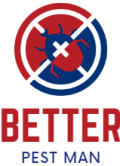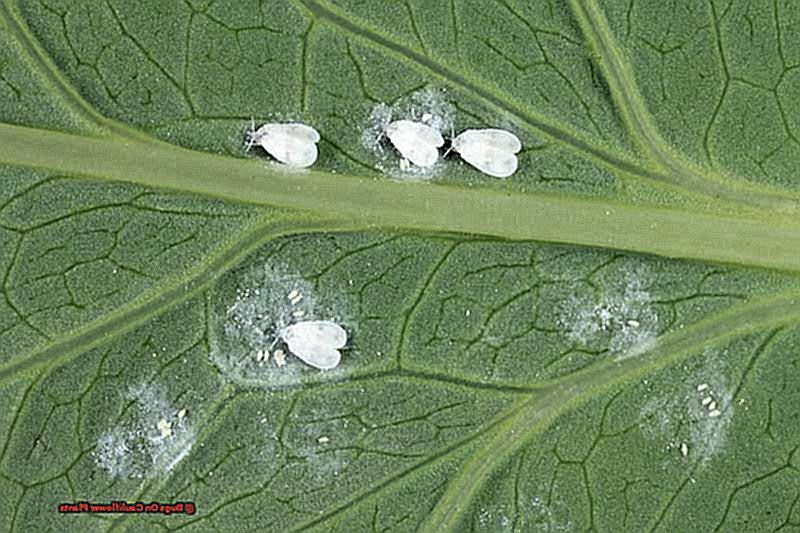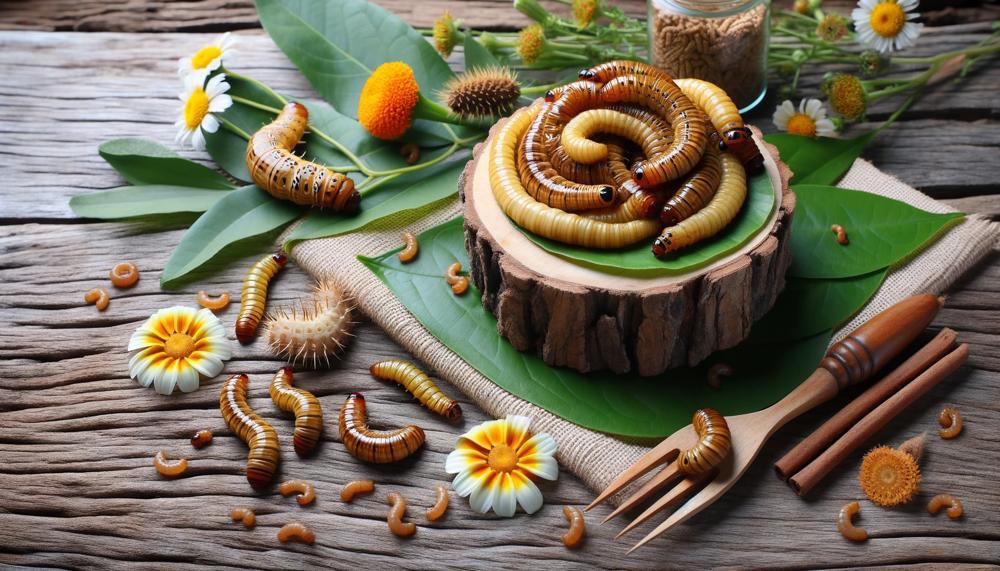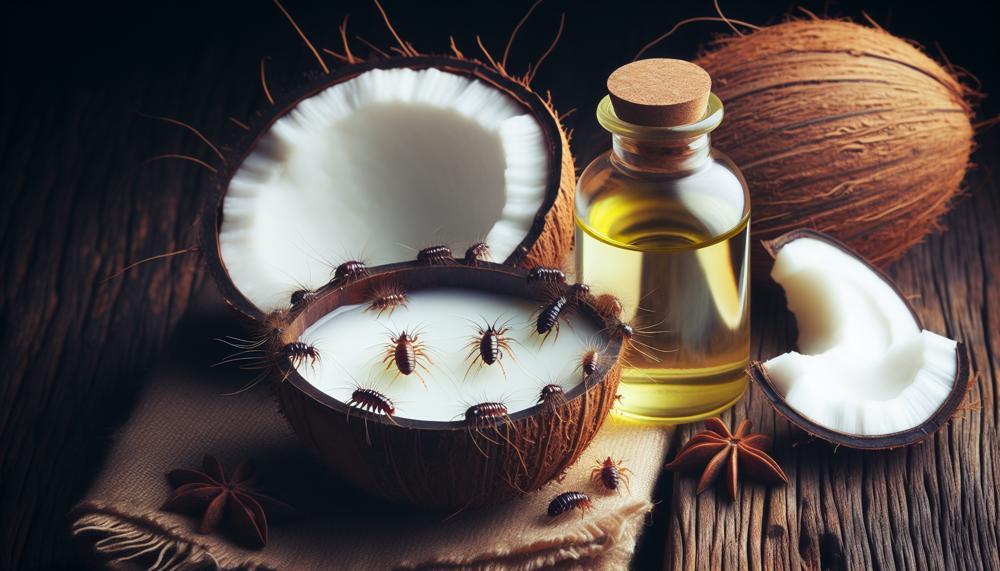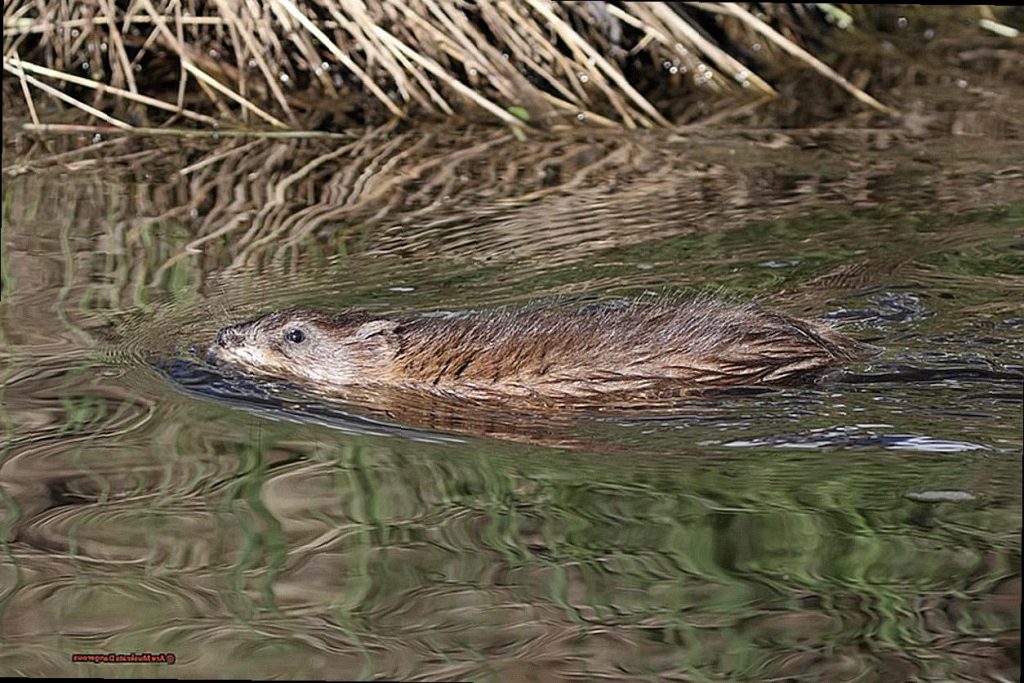Welcome to our blog post all about the troublesome insects that can infest and damage your precious cauliflower plants.
As much as we adore these versatile and delectable vegetables, they tend to attract a diverse array of pestilent bugs that can quickly turn a thriving plant into a wilted disaster. But fret not, fellow gardeners.
We are here to equip you with the knowledge and strategies necessary to defend your cauliflower plants against these tiny invaders. From aphids to caterpillars, we will delve into the most prevalent bugs that plague cauliflower plants and delve into their behaviors, life cycles, and methods for identification.
So grab your trusty gardening gloves and let’s dive in to discover how to keep those pesky bugs at bay and enjoy bountiful harvests of delicious cauliflower.
Table of Contents
- 1 What are eating holes in my cauliflower leaves?
- 2 What bugs eat cauliflower?
- 3 Should I be worried about cauliflower pests?
- 4 What bugs are attracted to cauliflower plants?
- 5 Can bugs kill my cauliflower?
- 6 Signs of pest damage
- 7 How to get rid of bugs on cauliflower naturally
- 8 What can I plant with cauliflower to keep bugs away?
- 9 How to protect cauliflower from insects
- 10 Did you get rid of the cauliflower pests?
- 11 More DIY Pest Control Guides
What are eating holes in my cauliflower leaves?
It’s a conundrum that often baffles both seasoned gardeners and experienced farmers alike. One moment, your cauliflower plants are flourishing with vibrant green foliage, and the next, they are ravaged by mysterious holes. It can be disheartening to see your hard work being devoured by these unknown pests. But do not despair, for we have compiled a comprehensive guide to help you identify and manage the diverse range of bugs that can cause such perplexing damage to your beloved cauliflower leaves.
The Blister Beetles:
These insects are notorious for their blistering defense mechanism, but they also possess a voracious appetite for cauliflower leaves. Their long and slender bodies, coupled with their striking hues of red and yellow, make them easily identifiable. To combat these pests, manually removing them from the plants or utilizing natural insecticides such as neem oil can be highly effective.
The Yellow Margined Leaf Beetle:
True to their name, these beetles possess distinct yellow margins on their wings. They feed on the tender leaves of cauliflower plants, leaving behind minuscule holes. To manage their infestation, spraying neem oil or products containing pyrethrin can prove beneficial.
The Flea Beetles:
Measuring only a few millimeters in size, these petite beetles may be challenging to spot, but do not underestimate their destructive capabilities. They create numerous tiny holes in cauliflower leaves, causing significant harm to the plants. To prevent infestation, floating row covers or organic sprays containing spinosad can be employed.
The Beet Armyworm:
This notorious pest is known for its insatiable hunger and can swiftly devour entire cauliflower leaves in no time. It is usually adorned in shades of green or brown and boasts a distinctive white stripe running down its back. Natural insecticides or home remedies like garlic spray can be utilized to manage these pests.
The Cabbage Aphid:
At first glance, these small green insects may seem innocuous, but do not be fooled. They can transmit diseases and weaken cauliflower plants by sucking the sap from their leaves. Moreover, they also leave behind a sticky substance called honeydew, which attracts other pests such as ants. To control their population, insecticidal soap or neem oil can be utilized.
The Cabbage Loopers:
These sneaky caterpillars are known to leave behind large holes in cauliflower leaves and often hide beneath them.
What bugs eat cauliflower?
Unfortunately, crucifers like cauliflower are highly susceptible to various pests that can cause mysterious damage. In this comprehensive guide, we will delve into some of the most common pests that feast on cauliflower and provide effective strategies for controlling them.
The first step in effective pest control is accurately identifying the culprit behind the damage to your cauliflower plants. This will help determine the best course of action. Look out for tell-tale signs of infestation such as holes in leaves, tracks on foliage, missing vegetation, and weak plant vigor.
One of the most prevalent pests that attack cauliflower plants are aphids. These small flying insects suck sap from leaves and stems, resulting in wilting and stunted growth. They also attract ants, which can further harm the plants. To combat aphids, you can introduce natural predators like parasitic wasps or beneficial bacteria such as Bacillus thuringiensis.
Flea beetles are another common pest that can cause significant damage to cauliflower plants. These tiny beetles leave small holes in foliage while their larvae feed on young plant roots. To ward off these pesky beetles, you can use diatomaceous earth or horticultural oils and soaps.
Slugs and snails are also notorious pests that can wreak havoc on your cauliflower plants. Their damage is evident through holes in foliage and slimy trails. Handpicking is an effective method of control, or you can use diatomaceous earth as a natural repellent.
Blister beetles may seem harmless with their vibrant colors, but they can be destructive to cauliflower leaves as they chew holes through them. To keep these pests at bay, pyrethrum or cultivating the soil in spring to kill their larvae can be effective methods of control.
The yellow margined leaf beetle may appear visually appealing with its gold-bordered wings, but it is a potential threat to cauliflower crops. Both the adult beetles and their larvae feed on cauliflower leaves. Non-toxic approaches such as diatomaceous earth, beneficial nematodes, or natural predators like wasps can be utilized to control these pests.
In conclusion, proper identification and prompt intervention are crucial in controlling pests that feast on cauliflower. Utilizing natural and non-toxic methods can effectively combat these pests and safeguard your cauliflower crop. Remember to regularly monitor your plants for signs of infestation and take immediate action before the damage becomes irreversible.
Should I be worried about cauliflower pests?
The concise reply is affirmative. These troublesome creatures can cause chaos for your prized cauliflower plants, leaving you with little to no yield. But do not let that dishearten you from cultivating this nourishing vegetable in your yard. By adhering to some straightforward measures of prevention, you can safeguard your cauliflower plants and ensure a plentiful harvest.
Here are the typical pests and diseases that affect cauliflower and how to avert them:
- Cabbage maggots: These minuscule larvae feed on the roots of cauliflower plants, resulting in stunted growth and withering. To prevent their attack, refrain from using animal or green manure in the spring and postpone planting any vegetables from the cabbage family until after June.
- Cutworms: These cunning pests lurk in the soil and emerge at night to gnaw through the stems of young plants. To keep them at bay, eliminate weeds and plant debris from your garden and till the soil before planting.
- Flea beetles: These diminutive, dark-hued beetles can rapidly devastate your cauliflower plants by feeding on their leaves. Planting as late as possible can help avoid their onslaught. Furthermore, it is crucial to manage weed growth in your garden and remove old plants that may harbor these pests.
- Cabbage loopers and cabbage worms: These larvae can cause extensive harm by consuming the leaves of cauliflower plants. To thwart their attack, dispose of old plants after harvesting and handpick any larvae you encounter, depositing them in a receptacle of soapy water.
- Alternaria Leaf Spot: This disease is triggered by various types of the Alternaria genus and can result in yellow patches on cauliflower leaves. To prevent it, maintain a clean and debris-free garden, as the fungus flourishes in moist conditions.
- Bacterial Soft Rot: This disease is caused by several strains of virulent bacteria, including Pectobacterium carotovorum, and can cause mushy, watery spots on cauliflower heads. To avert it, practice proper garden sanitation and avoid overcrowding plants.
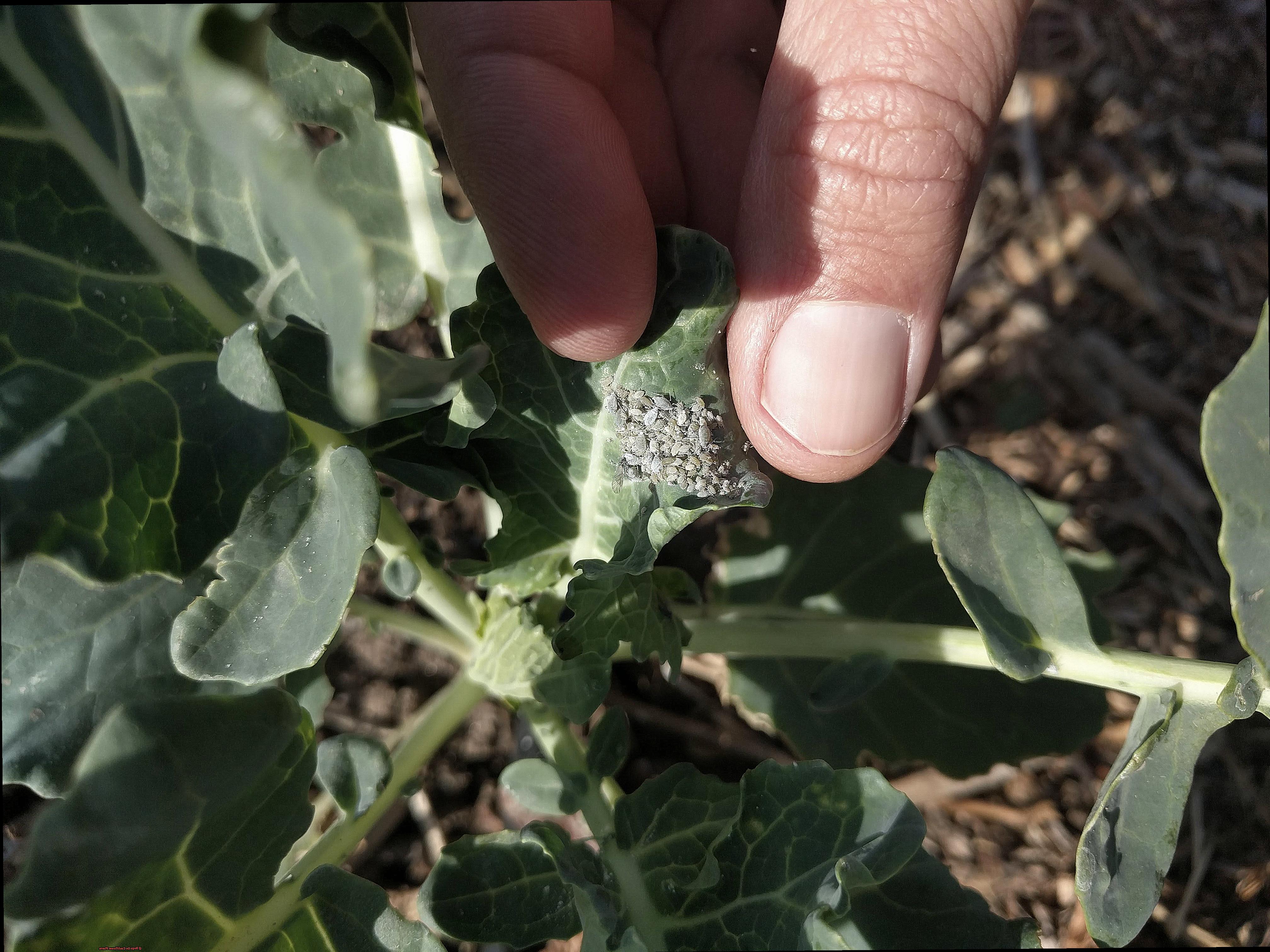
In addition to these preventative measures, it is crucial to routinely inspect your cauliflower plants for any signs of pests or diseases. Detecting and treating them early can help prevent a full-blown infestation. And remember, when in doubt, seek guidance from a local gardening expert for personalized advice.
What bugs are attracted to cauliflower plants?
Cauliflower, a member of the crucifer family, is a delicious and nutritious vegetable. However, like any plant, it is not immune to the pesky pests that can cause significant damage if left unchecked.
But what bugs are attracted to cauliflower plants? Ah, there lies the perplexity. Let us unravel this mystery together and explore some of the most common pests that can wreak havoc on your beloved cauliflower crop.
First on our list are the tiny but mighty aphids. These small flying insects may seem insignificant, but their impact on cauliflower plants is not to be underestimated. Feasting on the sap of leaves and stems, they stunt growth and leave the plant vulnerable to diseases. Interestingly, you may notice ants scurrying around your plants as they “farm” aphids for their honeydew secretion. To control these pesky pests, try using insecticidal soap or oil.
Next up are flea beetles, another common culprit that can cause damage to cauliflower plants. These small black beetles leave behind tiny holes in foliage, while their larvae feast on young plant roots. To prevent flea beetle infestations, diatomaceous earth or horticultural oils and soaps are effective options. For those with smaller gardens, handpicking can also do the trick.
But wait, there’s more. Slugs and snails may seem harmless, but they can do significant damage to your cauliflower plants by feasting on leaves and leaving slimy trails behind. To combat these slimy creatures, pick them off at night or use diatomaceous earth.
Leaf hoppers are another sneaky pest that can cause damage by sucking the sap from plants. Their wings resemble leaves, making them masters of disguise. Signs of their presence include tracks on foliage or poor vigor in your cauliflower plants. Fear not, for beneficial nematodes or wasps can be used as natural enemies against these pesky leaf hoppers.
And let us not forget the larvae of various insects and moths, which can also cause damage to cauliflower plants. These destructive critters leave behind holes in leaves and stunt growth. To combat them, try using parasitic wasps or the natural bacteria Bacillus thuringiensis.
As you can see, there are many complexities when it comes to controlling pests on cauliflower plants. It is essential to identify the specific pest affecting your plants to implement an effective and non-toxic control plan.
Can bugs kill my cauliflower?
In short, the answer is a resounding yes. These pesky creatures can inflict significant harm to your beloved cauliflower plants, rendering them inedible and potentially ruining your entire harvest. However, fret not, as there are numerous non-toxic techniques for managing pests on your cauliflower plants.
Identifying the Culprits
Before delving into the solutions, let’s first identify the common culprits that can wreak havoc on your cauliflower plants. These include:
- Aphids: These minuscule insects extract sap from leaves and stems and can also smother the flower with a viscous secretion, stunting growth.
- Harlequin bugs: Another type of sap-sucking insect that can lead to foliar demise.
- Slugs and snails: These slimy creatures leave holes in foliage and can be controlled by hand picking or using diatomaceous earth.
- Flea beetles: These insects create holes in foliage while their larvae feed on young plant roots. They can be repelled with diatomaceous earth.
- Blister beetles: These beetles gnaw holes in leaves, causing foliar death. They can be managed with pyrethrum or by cultivating the soil in the spring to eliminate their larvae.
- Yellow Margined Leaf Beetle: This beetle may be visually striking with its gold-bordered wings, but it poses a threat to cauliflower plants as both adults and larvae consume the leaves.
Non-Toxic Solutions
Now that we have identified our opponents, let us explore some non-toxic techniques for eradicating these pests:
- Diatomaceous Earth: This natural insecticide is composed of fossilized algae and is highly effective against a wide array of pests, including slugs, snails, flea beetles, and aphids.
- Horticultural Oils and Soaps: These oils and soaps are safe for plants but can effectively suffocate and eliminate soft-bodied insects such as aphids, mites, and scales.
- Hand Picking: While it may not be the most glamorous method, hand picking is still a highly effective way to remove pests from your plants.
- Beneficial Nematodes: These microscopic worms feed on the larvae of many pests, including flea beetles and cutworms.
- Parasitic Wasps: These wasps lay their eggs inside pest insects, effectively killing them from within.
Signs of pest damage
Cauliflower, with its delicate ivory heads and bountiful nutrients, is a highly coveted addition to any culinary garden. However, this brassica plant is easily susceptible to a variety of pests that can wreak havoc on your crop. In this in-depth piece, we will delve into the telltale signs of pest damage on cauliflower plants and explore effective methods for managing these pesky invaders.
- Cabbage Aphids: These minuscule, soft-bodied insects typically congregate on the underside of leaves. Feasting on plant sap, they produce yellowish patches on foliage and stunt growth. To check for their presence, gently shake the cauliflower plant over a white paper or cloth; if tiny yellowish-green bugs come tumbling out, you’ve got an aphid infestation.
- Cabbage Loopers: These inchworm-like caterpillars can be identified by their distinctive looping movements as they crawl across leaves. They feast on foliage, leaving behind ragged holes and jagged edges. To confirm their presence, inspect the leaves for droppings and look for caterpillars nestled in the curled leaves.
- Diamondback Moths: These diminutive moths sport white diamond-shaped markings on their wings and can be seen fluttering around cauliflower plants. Their larvae feed on the underside of leaves, resulting in irregular holes and chewed edges.
- Root Maggots: These tiny flies lay their eggs near the base of cauliflower plants; once hatched, the larvae devour roots, stunting growth and causing wilting. To check for root maggots, gently lift the plant and scan the soil for small white maggots or pupae.
- Cabbage Whiteflies: These petite whiteflies are easily recognizable by their ivory hue and small stature. They lay eggs on the underside of leaves, which hatch into nymphs that suck sap from plants, causing leaves to yellow and wilt.
- Cross-Striped Cabbage Worms: These emerald caterpillars feature a distinct yellow stripe that runs along their spines. They munch on foliage, leaving behind large, flat, yellow patches on leaves. You can easily spot them crawling on plants.
- Flea Beetles: These shiny black beetles have enlarged hind legs that enable them to hop from plant to plant. They feast on foliage, leaving behind minuscule holes and stunting growth.
How to get rid of bugs on cauliflower naturally
Cauliflower plants are a favorite among gardeners, but they are also a favorite among bugs. These pests can cause damage and spread diseases to your beloved plants. But fear not, you don’t have to resort to harmful chemicals to eliminate these unwanted visitors. In fact, there are plenty of natural methods that can effectively manage pest populations and protect your cauliflower plants. Let’s dive into some of these methods and discover how you can keep your plants bug-free.
Harness the Power of Diatomaceous Earth
Diatomaceous earth is a natural substance made from the fossilized remains of tiny aquatic organisms. This powdery substance may seem harmless, but its sharp edges can penetrate the exoskeleton of insects, causing them to dehydrate and die. To use it on your cauliflower plants, simply sprinkle it around the base and on the leaves. This will create a barrier that will keep pests at bay.
Utilize Horticultural Oils and Soaps
Horticultural oils and soaps are another effective method for controlling pests on cauliflower plants. These organic products work by smothering insects and their eggs, disrupting their life cycle. However, it’s important to note that not all oils and soaps are safe for garden use. Make sure to purchase horticultural varieties specifically formulated for plant care.
Hand Pick the Bugs
For smaller infestations, handpicking bugs off your cauliflower plants can be an effective method. While this may not be the most appealing task, it can make a significant difference in managing pest populations. Simply wear gloves and pick off the insects one by one, dropping them into a bucket of soapy water to drown them. This method works best for larger insects such as caterpillars and beetles.
Harness the Power of Natural Bacteria
Bacillus thuringiensis, also known as Bt, is a naturally occurring bacteria that is toxic to certain insects, including caterpillars and beetles. You can find Bt in many garden stores in liquid or powder form. Simply spray or dust it onto your cauliflower plants to control pests without harming the environment.
Purchase Natural Enemies
Believe it or not, you can actually buy natural enemies for your garden. Beneficial nematodes and wasps are great examples of these natural enemies. These tiny creatures can help reduce the population of pests in your garden and restore balance to your ecosystem.
What can I plant with cauliflower to keep bugs away?
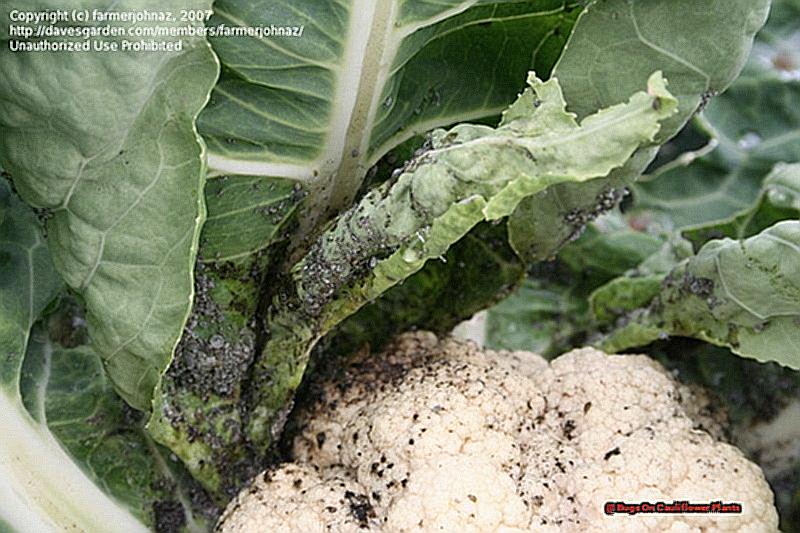
Cauliflower, a delectable and beneficial vegetable, is not only a favorite among humans but also attracts unwanted attention from bugs and pests. However, there are natural ways to repel these unwanted visitors from your cauliflower plants, such as companion planting.
Companion planting is the practice of growing different plants together that benefit each other in some way. For cauliflower, specific plants can act as natural deterrents for bugs and pests, ultimately promoting healthier and more resilient plants. Here are some recommended companion plants to grow with cauliflower for effective pest control:
Dill
Dill, an aromatic herb, has a strong scent that can deter pests from attacking cauliflower. Its pungent aroma is disliked by pests such as cabbage worms and aphids, making them less likely to infest your plants. Planting dill near your cauliflower can also attract beneficial insects like ladybugs and lacewings, which feed on harmful pests.
Marigolds
Not only are marigolds beautiful flowers, but they are also great for repelling pests. These flowers release natural compounds that can deter harmful insects like nematodes and whiteflies. Planting marigolds near your cauliflower can help protect them from these pesky pests.
Mint
Another aromatic herb, mint, can repel bugs and pests from your cauliflower plants with its strong scent. Its aroma can deter cabbage moths and flea beetles, common pests of the brassica family. Mint can also reduce stress in cauliflower plants, promoting healthy growth and preventing premature flowering.
Nasturtiums
Colorful nasturtiums release a strong scent that deters pests like aphids and whiteflies. They also have a peppery taste that prevents pests from feeding on your cauliflower plants. Planting nasturtiums near your cauliflower can also attract beneficial insects like hoverflies and parasitic wasps, which feed on harmful pests.
Chamomile
Aside from being a fragrant herb, chamomile also repels pests and has medicinal properties. Its scent can deter pests like cabbage worms and slugs, while its flowers can be used to make a natural insecticide. Chamomile also reduces stress in cauliflower plants, promoting healthy growth and preventing premature flowering.
How to protect cauliflower from insects
These troublesome insects can cause significant damage to your cauliflower plants, leading to reduced yield and potential disease transmission. As an expert in pest management, I have extensively researched and compiled a list of effective methods for preventing and controlling insect infestations on cauliflower plants. Let’s explore these strategies in detail.
Prioritize Good Garden Hygiene
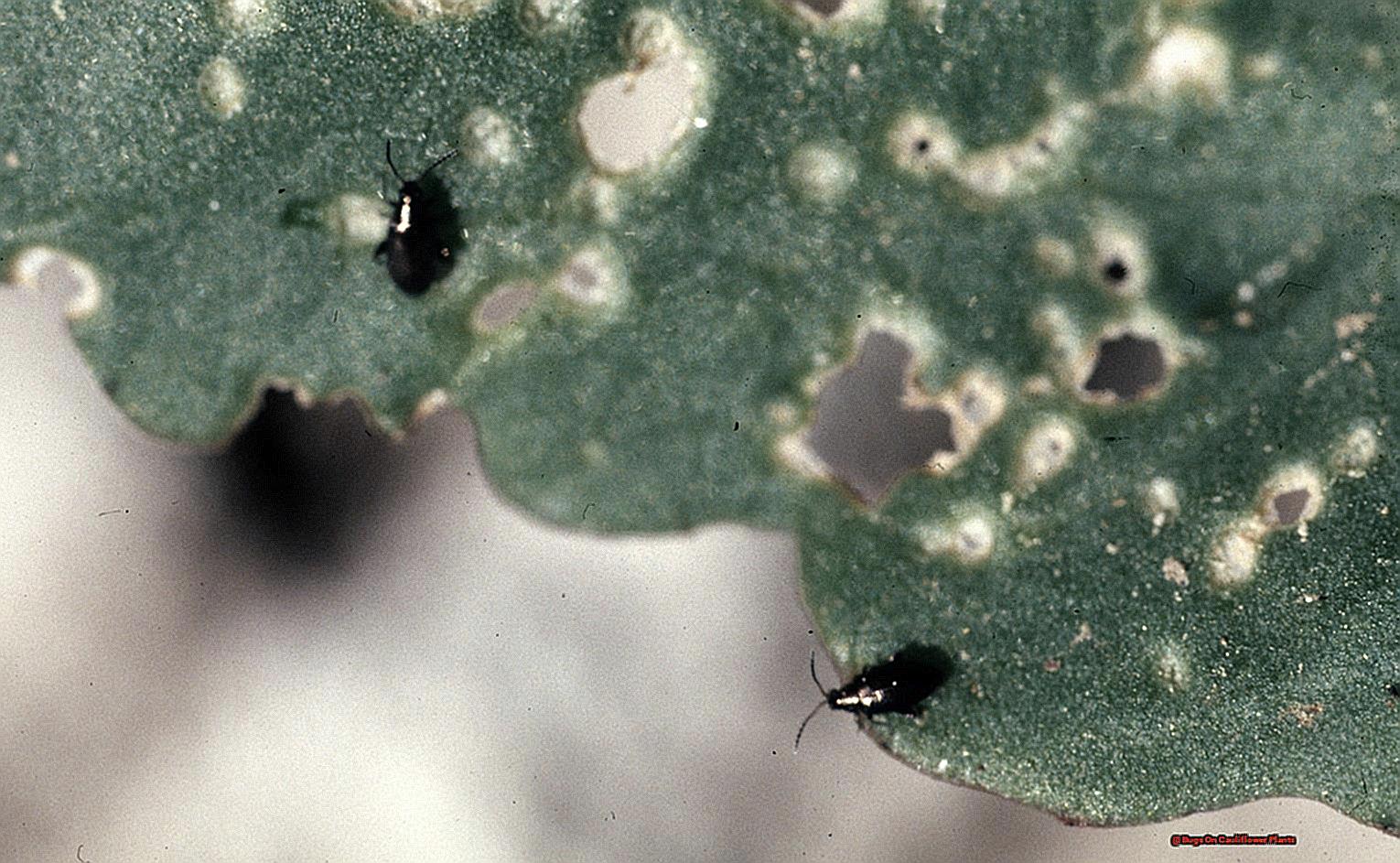
Maintaining proper garden hygiene is the first crucial step in preventing insect infestations on cauliflower plants. Regularly clearing away dead or decaying plant matter from the garden eliminates potential food sources for pests. Additionally, removing weeds and debris from around the plants reduces hiding places for insects.
Utilize Companion Planting
Another effective method for deterring pests is through companion planting – growing specific plants near cauliflower that naturally repel insects. Examples of suitable companion plants include marigolds, garlic, and onions, which release scents that deter pests or attract beneficial insects that prey on them.
Use Physical Barriers
Lightweight row covers made of fabric can serve as an effective barrier against flying insects like moths and beetles, as well as crawling pests like slugs and snails. These covers also protect plants from extreme weather conditions.
Consider Insecticides
In cases of severe infestations, prompt action is necessary to control the pests. Using insecticides specifically formulated for vegetable gardens can effectively eliminate pests. However, it is essential to carefully read and follow instructions for safe use on edible plants.
Implement Biological Controls
Introducing natural predators or parasites that feed on or lay eggs in pest populations is another effective approach for controlling insect infestations. For example, ladybugs can help control aphid populations, while parasitic wasps target caterpillars.
Remember to identify the specific pest before implementing any control measures, as methods may vary depending on the type of insect infestation.
In conclusion, by maintaining good garden hygiene, utilizing companion planting, implementing physical barriers, and targeted control methods, you can successfully prevent and control insect infestations on cauliflower plants.
Did you get rid of the cauliflower pests?
Continue reading to uncover the top methods and tips for keeping your plants free of pests.
Identifying and Understanding Pests
The first crucial step in controlling pests on your cauliflower plants is correctly identifying and understanding the specific pest. Some common pests that can cause trouble for cauliflower plants include flea beetles, cabbage worms, slugs and snails, maggots, aphids, harlequin bugs, webworms, loopers, armyworms, cutworms, moths, nematodes, and thrips.
Methods for Controlling Pests
Once you have accurately identified the pest, it’s time to take action. Here are some effective techniques for controlling common pests on cauliflower plants:
- Flea Beetles: Utilize kieselgur or neem oil
- Cabbage Worms: Employ insecticidal soap
- Slugs and Snails: Install a barrier to deter slugs
- Maggots and Aphids: Spray with neem oil or use insecticidal soap
- Harlequin Bugs: Utilize insecticidal soap
- Webworms: Spray with neem oil or use insecticidal soap
- Loopers and Caterpillars: Use insecticidal soap or chemical pesticides
- Cutworms: Seek additional guidance on eliminating them in the garden
- Moths: Use chemical pesticides available at garden centers
- Nematodes: Apply insecticidal soap
- Thrips: Spray with neem oil or utilize insecticidal soap
Prevention is Key
In addition to targeted control methods, taking preventive measures is crucial in keeping pests at bay from your cauliflower plants. Properly preparing the soil is vital in preventing various diseases such as blackleg, bacterial soft rot, clubroot, downy mildew, powdery mildew, black rot, rust, and mold from affecting cauliflower plants.
Some preventive measures include:
- Treating seeds with hot water before planting to prevent fungal diseases like blackleg
- Ensuring proper drainage and using high-quality soil to control bacterial soft rot
- Employing fungicides and spraying acid on leaves to prevent downy mildew and powdery mildew
- Removing infected plants to stop the spread of diseases like black rot
More DIY Pest Control Guides
Controlling pests on cauliflower can be a perplexing endeavor, particularly if you prefer using organic methods. However, with the right strategies and techniques, you can safeguard your cauliflower plants and reap a bountiful harvest. In this guide, we will delve into some highly effective ways to naturally control pests on cauliflower.
Deploy diatomaceous earth
Diatomaceous earth (DE) is a natural and non-toxic powder created from the remains of tiny aquatic creatures called diatoms. When spread around the base of cauliflower plants, it acts as a barrier that damages the outer shells of pests such as slugs, snails, and root maggots. This results in their dehydration and demise. DE is safe for humans and pets, but it can be detrimental to beneficial insects. Use it sparingly and only in areas where pests are present.
Concoct your own bug spray
You can concoct your own bug spray using ingredients like garlic, onion, cayenne pepper, and dish soap. Simply blend these elements with water and strain the mixture into a spray bottle. This homemade solution is highly effective against pests like aphids, cabbage loopers, and cabbage whiteflies. However, it may also harm beneficial insects. Be cautious and avoid spraying directly on plants.
Utilize insecticidal oil/soap
Insecticidal oils or soaps are derived from natural ingredients and are safe for use in organic gardening. They work by suffocating pests such as aphids, mites, and whiteflies. These products should be sprayed directly on affected plants for optimal effectiveness. However, exercise caution when using them on hot or sunny days as they may cause damage to plants.
Handpick the pests
One of the simplest ways to control pests on cauliflower is by handpicking them off the plants. This method is most suitable for larger pests like caterpillars and slugs that are easily visible. You can also use a vacuum cleaner to remove pests from plants, especially those that are hard to reach. Handpicking may be labor-intensive, but it can be an effective approach for small gardens.
Harness the power of Bacillus thuringiensis
Bacillus thuringiensis (Bt) is a naturally occurring soil bacteria that has burstiness in its effectiveness against insects. It works by producing a protein that disrupts the digestive system of pests, causing them to cease feeding and eventually perish.
